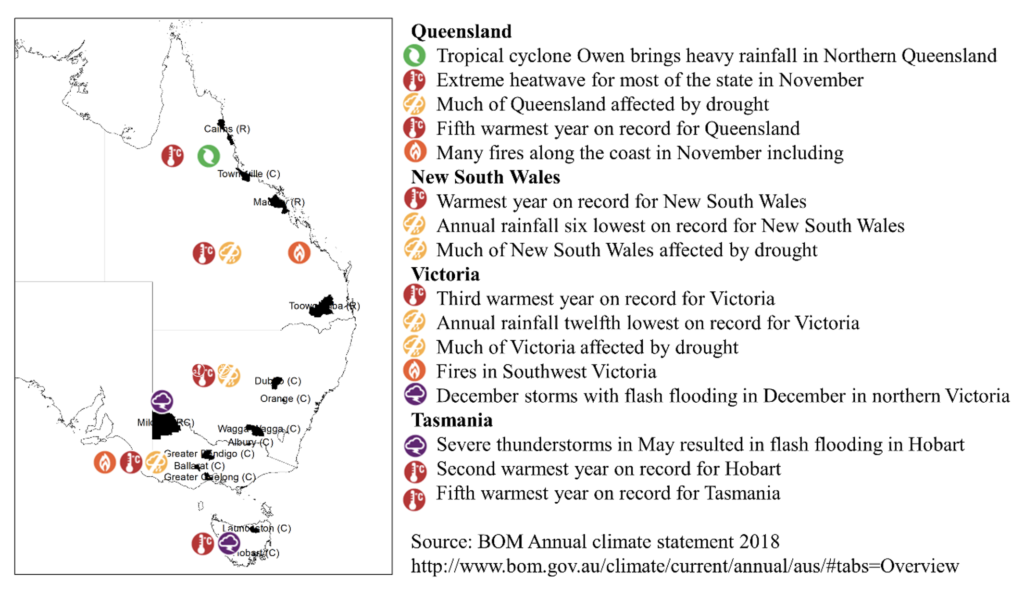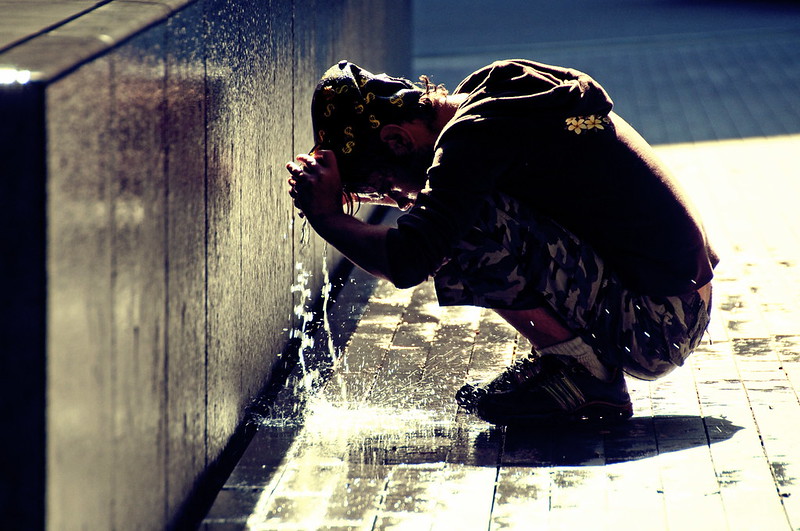How long until we notice change from climate change?
We are experiencing climate change here and now. Some of the changes might be subtle things that we don’t readily notice – like small changes in average summer day time temperatures, or the number of extreme heat days a year. Each decade since 1980 has been warmer than the last - but often people don't remember how these things were different in the past - we suffer from ‘shifting baselines’ which means we only recollect what happened in the recent past like last week or last year as a comparison for what we experience today. This means that these subtle changes may be hard to notice.
Some of the changes we are experiencing are actually much more dramatic – these include extreme weather events like unusual and severe storms or prolonged heat waves. Each year in Australia we are breaking lots of records. The Bureau of Meteorology puts out a great annual summary that you can refer to but I created a map collating notable examples for 2018 that gives you an idea of the types of climate change impacts and events we are currently experiencing.

The impacts from these extreme events are being felt in different ways depending on who you are and where you live. But as examples – if your home is in a low lying coastal area the cost of flood insurance is often too high for the average home owner. And councils and state governments are considering planned retreats from the coast in terms of where they will support recovery from flood events versus where they will encourage home owners to move to as an alternative. Similar experiences are being felt in Australia’s fire prone city fringes where home owners have to monitor high fire danger index days and consider moving out of their homes on those days to protect themselves.

Other ways that individuals and families are already feeling the impacts are through their home environments. Many are finding their homes aren’t built for our new extreme heat days in summer and so they have to install air conditioners or run the AC for much longer periods of time resulting in substantial electricity bill increases. Individual, council, and state led adaptation measures are needed to make sure our built environments can cope with these changes from floods, fires, storms through to changes in heat.











